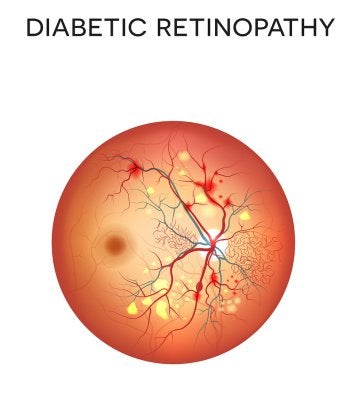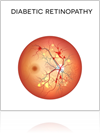If you have diabetes, one of the conditions your eye doctor near Windham will screen you for during your eye exam is diabetic retinopathy. This serious eye disease is associated with damage to the retina and can lead to vision loss without proper treatment. Regular eye exams are crucial for people with diabetes so that retinopathy can be diagnosed and treated as soon as possible. Here is what you need to know about this eye disease.
Causes of Diabetic Retinopathy 
Diabetic retinopathy is caused by damage to the blood vessels that are located in the retina. These damaged blood vessels can leak fluid into the macula—part of the retina that helps you see fine details and color. When the macula is flooded with fluid, vision becomes cloudy. New blood vessels may also form on the surface of the retina to improve circulation. These blood vessels may leak and cause vision loss. Typically, this blood vessel damage is caused by prolonged periods of high blood sugar levels, which is why maintaining tight blood sugar control is important for people with diabetes.
Symptoms of Diabetic Retinopathy
In early stages, diabetic retinopathy doesn’t cause any symptoms and can only be diagnosed by an eye doctor during an exam. As the disease progresses, patients experience floaters, blurred vision, night vision problems, and dark spots in the center of vision. During an eye exam, eye doctors test visual acuity, refraction, and eye pressure and evaluate the eye to look for signs of diabetic retinopathy.
Treatment Options for Diabetic Retinopathy
Gaining blood sugar control may be enough to treat diabetic retinopathy that is diagnosed in early stages. In some cases, lasers can be used to stop leakage and shrink blood vessels that have grown on the retina surface. These treatments may impact side vision but preserve central vision. If diabetic retinopathy is not treated before significant vision loss occurs, tools like magnifiers and microscopic lenses can help.

